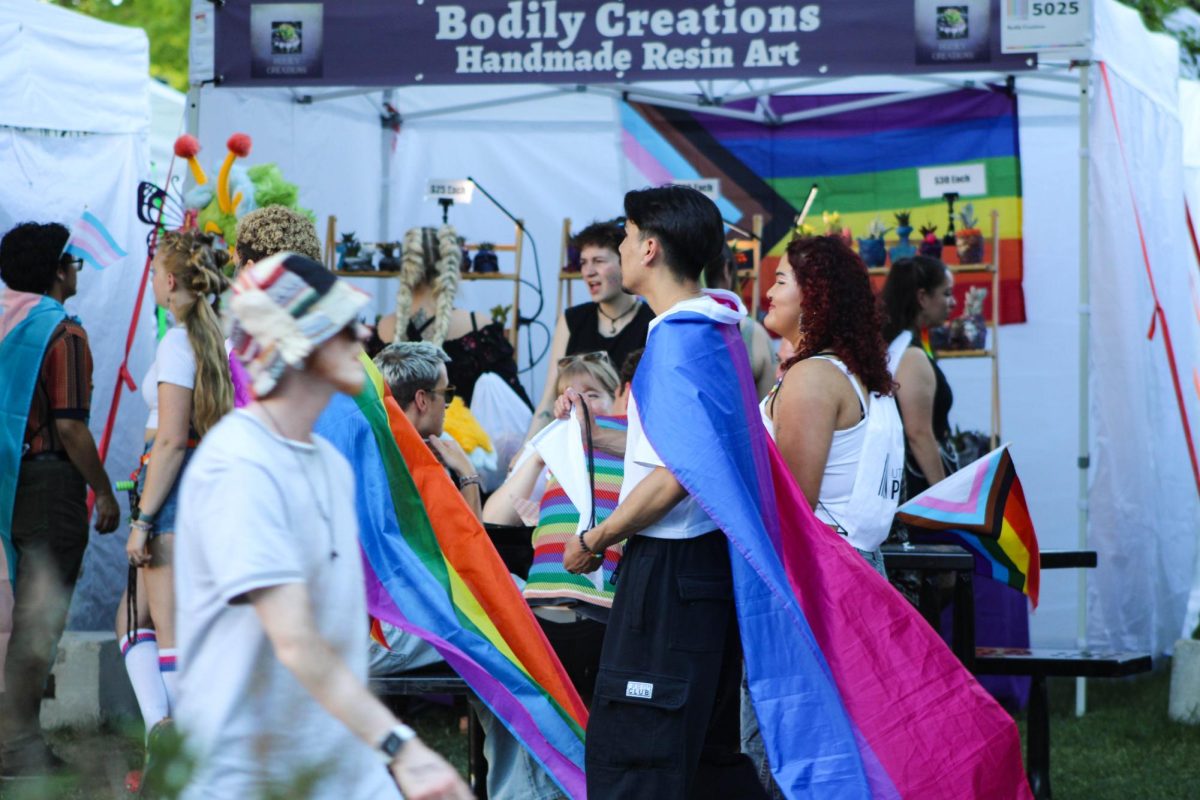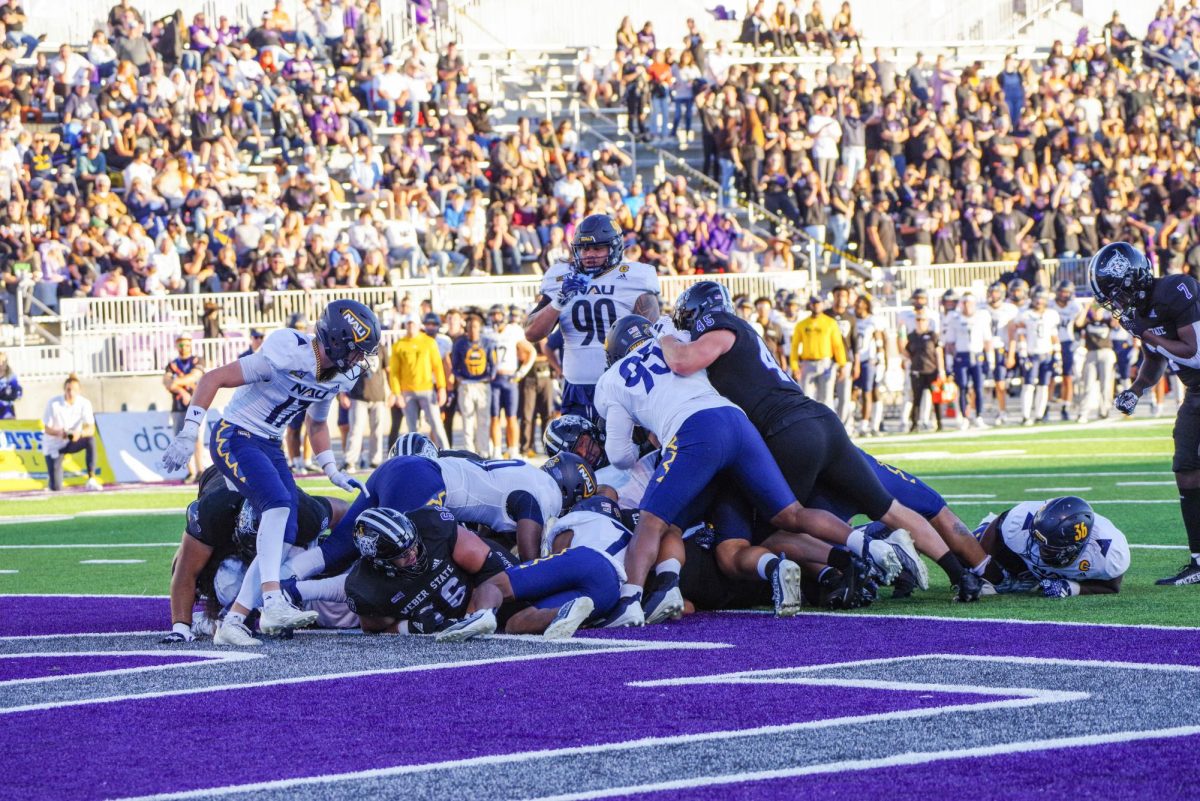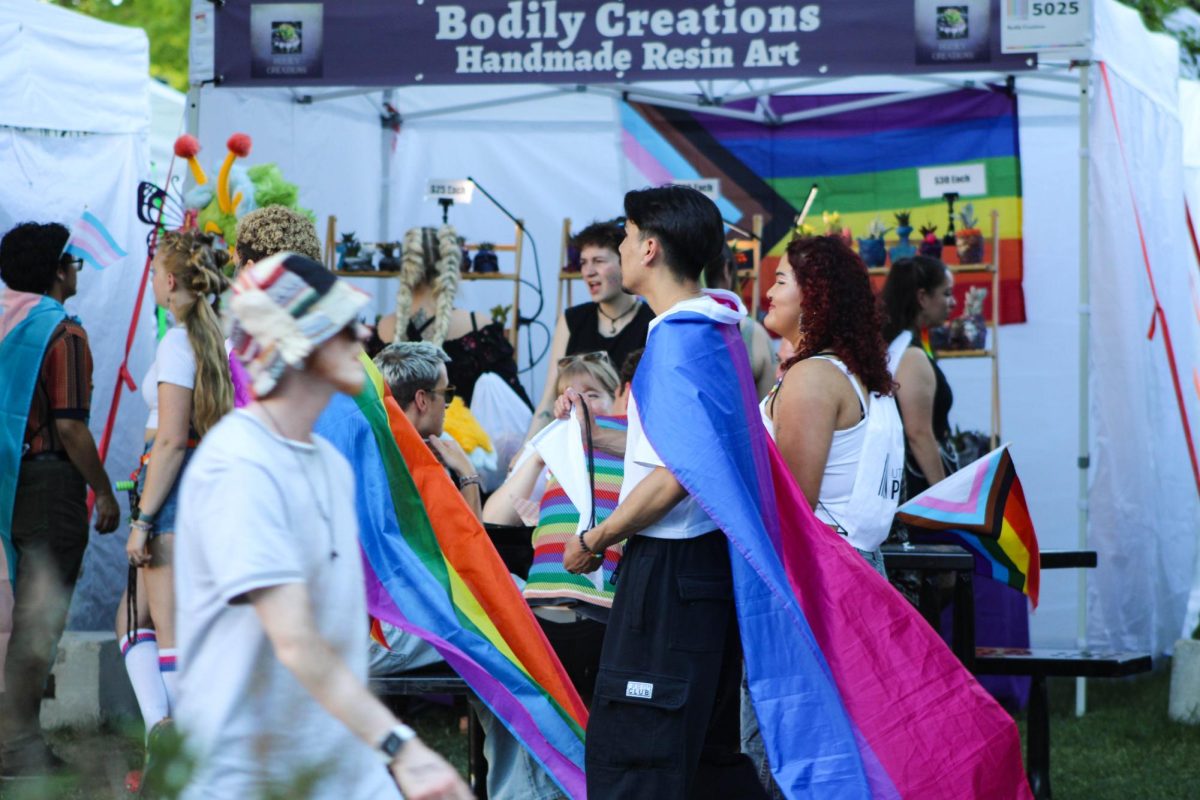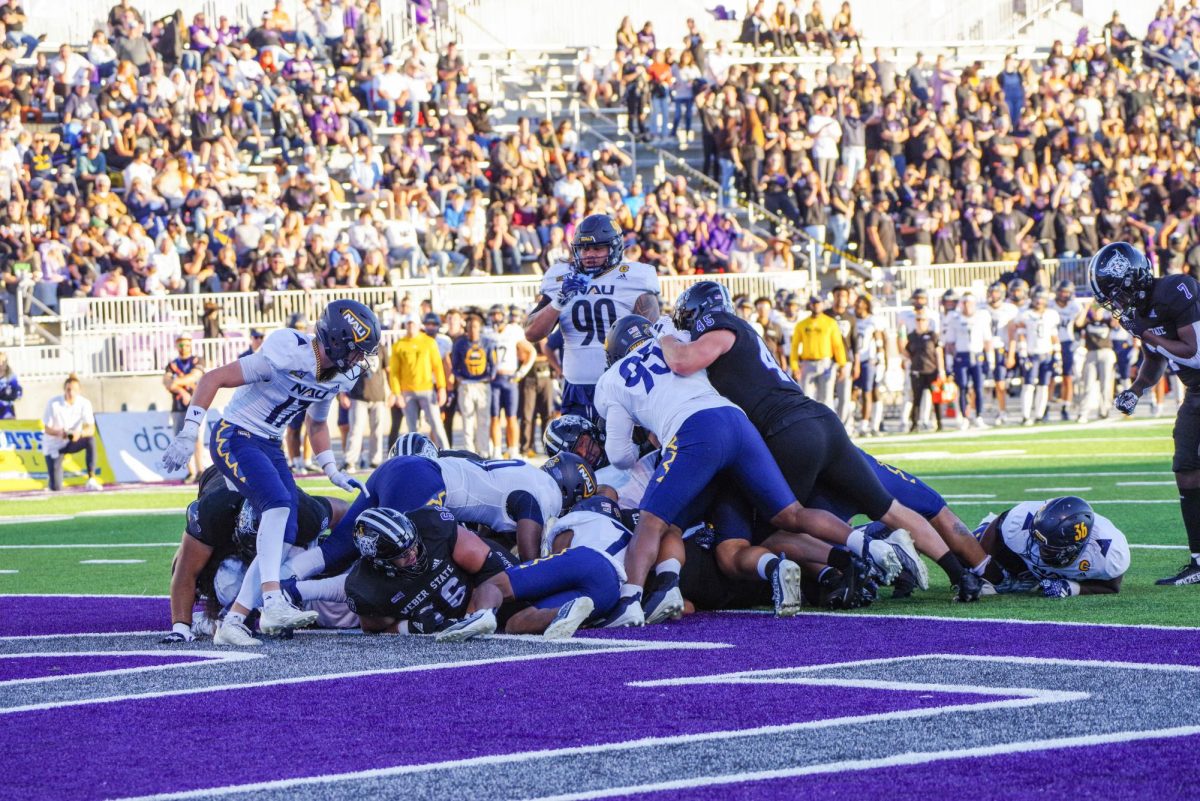
The MakerBot 3-D printer at the campus bookstore prints the base of a Statue of Liberty figure.
Three-dimensional printers are still a relatively new technology, but they are also a fast-developing technology that seem limitless as to what they can create. Weber State University students can see this new technology on display and in action down in the campus bookstore.
The bookstore features products by MakerBot Industries, which was founded in 2009 by Bre Pettis, Adam Mayer and Zach Smith in Brooklyn, N.Y. In 2010, MakerBot acquired 3d World-Wide, one of the early innovators of 3-D printing, and merged their two teams. MakerBot continues to grow in popularity worldwide for the quality of its printers.
“We’re all tech nerds here, truthfully, and it is our job not to just sell technology, but to discover the different uses of technology that departments could have,” said Terry Tolman, who works at the campus bookstore.
The bookstore has printed various items in 3-D, including a bust of Yoda and a replica of the Tardis from “Doctor Who.”
Although the 3-D printer showcased at the bookstore is a lower-end model, Tolman said the store should be getting a different model from MakerBot soon, which “has the ability to print two colors and some other features.”
The current 3-D printer is limited to one color, and is also limited in what it can print.
“What you can print is limited to its ability to print things that aren’t necessarily out and away from the main body of whatever you are printing,” Tolman said. In other words, it does not have the ability to print things that stand away from the main body of the object being printed.
“We try to print things like figures, but if the figure had an arm extended, it wouldn’t be able to print the arm because it would just fall as it was printing it,” Tolman said. “Higher-end models actually have the ability to create something under the arm that breaks away easily so that it can print more elaborate objects.”
The printer does reinforce 3-D, enclosed objects with a honeycomb effect so the objects do not cave in light pressures.
Psychology major Jordon Roberts said he was surprised to learn the campus bookstore features 3-D printing technology.
“I think that both selling 3-D printers and allowing students to use them in the student store or other places is a great idea,” Roberts said. “It allows students a new experience and, for those of us with no artistic ability, a way to cheat at life just a little.”
As to what Roberts would do with his own 3-D printer, he said he would print an “Alien” bust and a Predator one as well.
The bookstore has other new technology to show customers, including toys like the Sphere-O, a remote-controlled sphere that uses any device with iOS or Android to roll around and have battles with other spheres in the tag mode; remote-controlled helicopters that are easy to fly; and Leap Motion technology, which uses infrared to track the motions in users’ hands to control their Mac or PC.
“It’s nice to know that students have access to see what new and upcoming technology would be available to us so close,” said student Bradley Lloyd.













